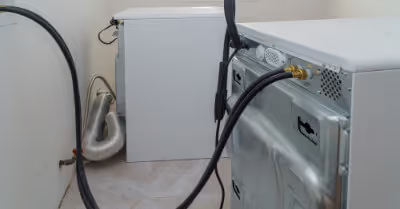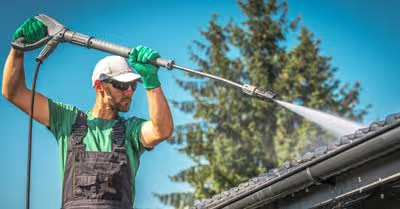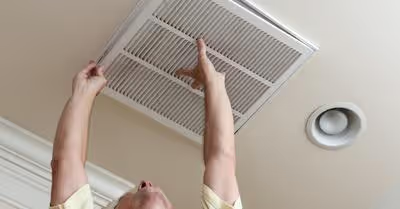Table of Contents
Cool-Season vs. Warm-Season Grass
Typically grasses are categorized as either cool-season or warm-season grasses. In general, cool-season grasses prefer cooler climates while warm-season grasses can handle warm and hot temperatures. Cool-season grasses include Tall and Fine Fescue, Rye, and Kentucky Bluegrass. Warm-season grasses include Zoysia, Bermuda, and St. Augustine.
Warm-season grasses do well in mild Winters, but can handle extreme Summers. Typically, they will also not require as much water as cool-season grasses do. They germinate and grow in temperatures higher than 80 degrees Fahrenheit.
Cool-season grasses do well in places that have moderate Summers and Winters with temperatures regularly below freezing. They require substantial hydration that often comes with increased snowfall. These types of grasses go dormant during the Summer.
However, this does not necessarily mean that you cannot grow cool-season grasses in the southern half of the country or that you can never grow a warm-season grass in the North. In fact, some homeowners choose to mix cool-season grasses with warm-season grasses.
Grass Climates
The United States is divided into four different zones for growing grass plus an additional transitional zone. These zones have their own climates that affect the type of grass and when these types should be planted. The zones are cool humid, warm humid, cool arid, warm arid, plus the transitional zone. Some states are divided up into more than one zone as well.
The Northern far West coast, Northern Midwest, and Northeast, are cool humid climate regions. The Southwest is known as warm arid climate. The Southeast is a warm humid climate. The West and Northwest is known as a cool arid climate. The Transitional zone consists of the Northern half of the Southern states, the Southern half of the Midwest all the way to the Atlantic, and the tip of Texas including the panhandle up through most of Kansas.
Cool humid regions grow cool-season grasses like Fescue or Kentucky Bluegrass. However, southern parts of these regions may be able to grow some warmer weather grasses as well. Cool arid areas will also support cool-season grasses as long as there is sufficient water or irrigation. If there is not enough irrigation, some warm-season grasses can be used.
Buffalograss is a good choice because it is drought tolerant, but can survive cooler weather than other warm-season grass types. Buffalograss also does well in warm arid regions.
Warm humid grasses are warm-season grasses that may not require as much water as cool-season grasses, but that do not have to be as tolerant to drought as Buffalograss. Bermuda is the most popular choice.
The transitional region that falls in between the two major categories of cool and warm does not support any specific grass types. For this region, you may have to use a combination of warm and cool grass types. You may also have to plant the grasses at different times because of this with overseeding. Though, for most of the transitional zone, cool-season grasses are more likely to do well.
Best Time to Plant Grass
Because the climate can be drastically different even within the categorical regions, there is no set rule for an entire state, but there are general rules that do apply. The two primary rules that you should keep in mind are defined by the type of grass and therefore also by the region.
As a general rule, cool-season grasses should be planted in the late Summer or early Fall. This will give them the best chance of survival because they will not have to survive the hottest Summer temperatures, but they will also have a chance to consume sufficient nutrients before the harshest part of the Winter.
A similar general rule applies for Warm season grasses. Warm-season grass types should be planted in the early Spring or the Summer after the average daytime temperatures reach a minimum of 65 degrees Fahrenheit. This will let the grasses utilize these warm temperatures and lets them establish before the hottest Summer temperatures and well before the average temperatures get too cold.
You always need to take your specific area and weather into consideration. The USDA has different climate zones that offer landscaping and gardening experts general planting guidelines that you may also find helpful. These climate zones are commonly found on the backside of seed packets. These climates also take into account the times when temperature changes will likely occur. These zones are given a number 1 through 11. You can find more information and determine which zone you are in here.
Each specific grass type also has specific times when it is best to lay the grass seed and for which zones. After you determine your zone number, check out this table to see which grass types work well for your zone and when the best time to seed is.
Grass Seeding Tips
Planting the right type of grass for your region at the right time is very important, but you will also have to plant the seed correctly. One of the most important things when planting grass seed is to properly prepare the soil.
You will have to remove any debris that could potentially block the seeds from contact with the soil. This also means that you need to dethatch which is best done with a rake or similar tool. Then, you should aerate the soil so that it is loose and the seeds can find their way in to germinate easier.
You may want to plant grass seed as soon as possible, but you should still wait until the weather and other factors are ideal for your grass type. Choose an overcast day. You should also choose a day that is not very windy because wind can blow the seeds around.
You can use a spreader to lay the seed evenly around the lawn. Then, cover up the seeds with a very thin layer of soil. This will increase the chances of adequate germination. Fertilize and then water sufficiently. Make sure that the soil is moist, but not flooded.
One of the most important things is to avoid herbicide after you plant the seeds because it could kill the seed and all your work would be for nothing. It is a good rule of thumb to wait at least a month after seeding to use any herbicide products or other chemicals. Also, wait at least 6 weeks before you mow because the roots may not be fully grown and a lawn mower can rip out the young grass.
If you choose a good time, the seedling will establish their roots before extreme temperatures set in. Still, it is a good idea to check the upcoming week’s weather to make sure that unusually cold or warm weather is not in the forecast.
The speed of growth and germination will depend on a lot of factors as well. Some grasses can take 2 or 3 times as long to germinate than other types. Additionally, if you use a mixture of more than one type of grass seed, they may germinate at different times and grow at different rates, especially when they are young. Warm-season grasses will not germinate if the temperature is continuously under 55 degrees and cool-season grasses will not germinate well if the temperature is above 55 degrees.
You should also plan ahead for potential or forecast rainfall. Check the local weather prior to planting and look for any potential thunderstorms. Seeds will do well if they are planted before a good rain, but a heavy storm can also wash away the seeds. If there is light rain in the forecast, you may want to plant a day or so before, but if it may be a heavy storm, you will want to wait until after. Conversely, if you plant seeds during a dry spell or drought, it may be harder for you to adequately irrigate them. Seeds have to have a good amount of water in order to establish their root systems. You need to plan to water every day at least once, but it is best to have watering scheduled 2, maybe even three times every day for the first couple of weeks after the seeds are planted.
It is always a good idea to eliminate any weeds or dominating grasses that you do not want pushing the new seedling away or crowding the space. In addition, weeds can steal nutrients from the seeds that are required for healthy growth. Also, you want to make sure that any disease and pest are eliminated. Finally, you also may not want pets, children, or anything else trampling on the newly planted seed for four to six weeks if you can help it.
One way to see if it may be a good time to lay the grass seed is to check the surrounding vegetation. Are other grasses in the area growing well? If so, that is a good sign that the seeds will also do well and germinate. If grasses are dying, brown, show signs of disease or over watering, or look unhealthy, then you may want to ask yourself why that is and plan for possible variables.
Recent Articles
















